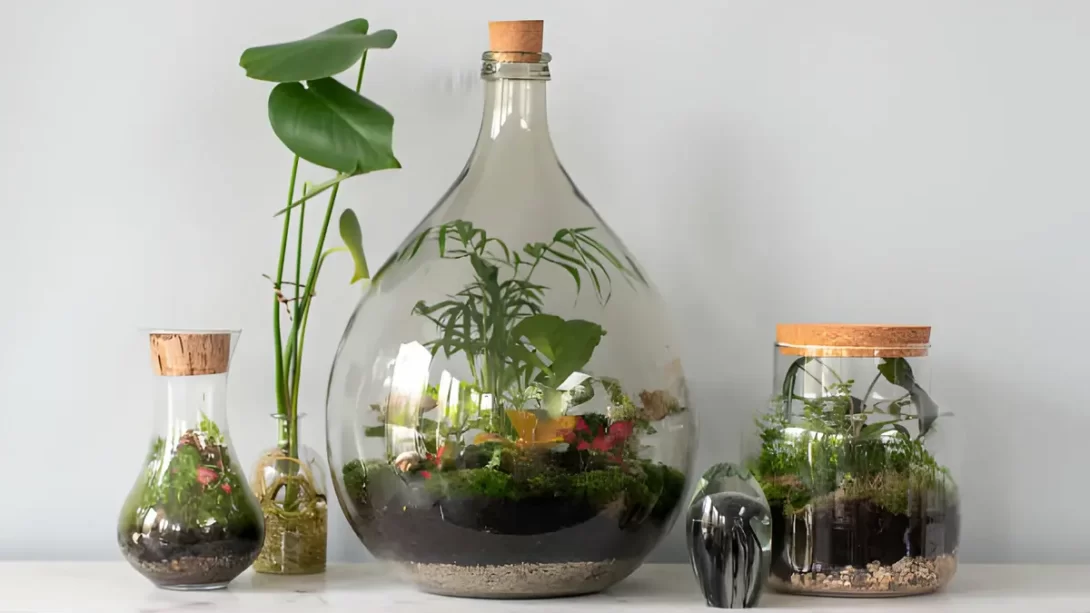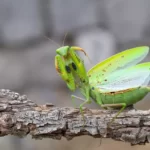Terrariums, often seen as beautiful ornaments or intriguing natural displays, are much more than just decorative items. They are self-contained miniature ecosystems, showcasing the fascinating interplay of nature’s basic elements. Originating in the mid-19th century, terrariums have grown in popularity, especially among urban dwellers seeking to add a touch of green to their indoor spaces. This article will delve into the workings of terrariums, explaining how these small-scale ecosystems mimic the larger natural world.
Components of a Terrarium
At its core, a terrarium consists of a few key components: a transparent container (glass or plastic), substrate (soil and rocks), plants, and often decorative elements like moss or small figurines. The choice of container and its properties (closed or open) play a significant role in determining the terrarium’s microclimate. Closed terrariums create a more controlled environment, ideal for moisture-loving plants, whereas open terrariums allow for more air circulation, suiting plants that prefer a drier environment.
Each component of a terrarium has a specific role. The container acts as the physical boundary, the substrate provides the foundation for plant growth, and the plants themselves are central to the mini-ecosystem. Decorative elements, while not essential, can enhance the visual appeal and sometimes offer additional microclimate benefits, like moss retaining moisture.
The Science Behind Terrariums
The magic of a terrarium lies in its ability to simulate the natural water cycle on a miniature scale. In a closed terrarium, water evaporates from the soil and plant surfaces, condenses on the walls of the container, and then precipitates back down. This self-sustaining cycle minimizes the need for additional watering, making terrariums a low-maintenance gardening option.
Light plays a crucial role in this mini ecosystem. It drives the process of photosynthesis, enabling plants to produce food and oxygen. However, the intensity and duration of light exposure need to be carefully managed to prevent overheating and ensure the health of the plants.
Gas exchange is another key aspect of terrarium function. Plants absorb carbon dioxide and release oxygen during the day through photosynthesis. At night, the process of respiration takes over, where plants release carbon dioxide. This exchange helps to maintain a balance of gases within the terrarium, crucial for plant health and the overall stability of the ecosystem.
Creating and Maintaining a Balanced Ecosystem
Building a balanced terrarium requires careful selection and placement of its components. The choice of plants is crucial; they should be suited to the microclimate of the terrarium. For instance, in a closed terrarium, which retains more humidity, tropical plants like ferns and mosses thrive, while succulents and cacti are better choices for open terrariums. The size and growth patterns of the plants should also be considered to ensure they don’t outgrow the container.
The soil layer, along with gravel or small stones at the base, is essential for proper drainage. This prevents water from pooling at the roots, which could cause rot. Layering the terrarium with charcoal can also help filter the water and keep the ecosystem clean. Additionally, maintaining a balance in humidity levels is crucial, especially in closed terrariums, to avoid mold and fungal growth.
Regular maintenance, including pruning of overgrown plants and removal of dead or decaying matter, is vital for the health of the terrarium. Ventilation is another key aspect, particularly for closed terrariums. Periodically opening them to allow fresh air exchange can help prevent mold growth and sustain plant health.
Challenges in Terrarium Care
Despite their self-sustaining nature, terrariums can face several challenges. Overwatering or under-watering can disrupt the delicate balance within the ecosystem. Signs like condensation covering the entire glass or completely dry soil indicate a need for adjustment in water levels.
Light is another critical factor. While terrariums require light for photosynthesis, too much direct sunlight can turn the terrarium into a greenhouse, with excessive heat harming the plants. Finding a spot with indirect sunlight is usually ideal.
The enclosed environment of a terrarium can sometimes create issues with ventilation, particularly in closed terrariums. This can lead to an increase in humidity and potential mold or mildew problems. Regular monitoring and occasional airing can help mitigate these issues.
Terrariums as Educational Tools
Terrariums offer more than just aesthetic appeal; they are valuable educational tools that provide insights into ecological and biological processes. By observing the life cycle of plants and the water cycle in a controlled environment, individuals can learn fundamental concepts of ecology, such as interdependence, resource cycling, and habitat dynamics. Terrariums demonstrate the delicate balance required to maintain a healthy ecosystem and the impact of changes in environmental conditions.
For educators and parents, terrariums can be used to teach children about plant biology, the importance of environmental conservation, and the principles of sustainable living. The hands-on experience of creating and caring for a terrarium encourages a deeper connection with nature and fosters a sense of responsibility for the natural world.
Moreover, terrariums illustrate the concept of microclimates and how different plants adapt to specific conditions. Observing these adaptations can spark discussions about biodiversity and the importance of preserving different habitats for wildlife.
Conclusion
Terrariums are fascinating miniature ecosystems that encapsulate the complexity and beauty of nature. They function as self-sustaining environments, demonstrating the water cycle, the importance of light for photosynthesis, and the balance of gases crucial for plant life. Creating and maintaining a terrarium requires understanding these fundamental processes and the specific needs of the plants within.
The challenges in terrarium care, such as managing light exposure, humidity, and ventilation, highlight the delicate balance of natural ecosystems. As educational tools, terrariums provide valuable lessons in ecology, biology, and environmental stewardship, making them an enriching addition to homes, classrooms, and offices.
Whether you are a seasoned gardener or a novice, engaging with terrariums can deepen your appreciation for the intricate workings of natural systems. These miniature ecosystems not only enhance indoor spaces but also offer a window into the broader environmental processes that sustain life on our planet.



